If you're one of the thousands of hobbyists who flies drones*, develops drones, or uses them (or wants to use them) to solve difficult problems in new and innovative ways, things are about to get much more complicated. The US government is about to enact a legal definition that will eliminate much of the potential of these small, intelligent machines; that is unless you are willing to certify, license, and operate them under many of the same regulations (possibly even more) that full-scale aircraft must follow.
Sound absurd? Read on. And be sure to see the end of the article; there's still time to make your voice heard.
* Although it's not entirely accurate, we're going to follow the popular convention that "drone" describes any pilotless aerial vehicle, large or small, autonomous or remotely-piloted, fixed-wing or rotorcraft, etc.
<
p>
Mike Grusin
<
p> UAVs, Unmanned or Uncrewed Aerial Vehicles, have been around as long as there have been aircraft, even (by definition) before the Wright Brothers. They've performed various minor roles for decades, but as with robotics in general, recent advances in technology have made them an increasingly effective and economical solution for jobs that are "dirty, dull, or dangerous." In addition to a successful military career, various civilian groups are actively working on UAV systems for all types of science, agriculture, surveying, broadcast, networking, search and rescue, disaster relief, national and private security, and many other roles. (Small consumer drones have also brought unprecedented new capabilities to hobbyists, but we'll get to that in a bit.)
The US government has long predicted that UAVs would have an increasing presence in our skies, and in 2012 Congress passed the FAA Modernization and Reform Act, which among other things, tasked the FAA with integrating UAVs into the National Airspace System (NAS); the complex network of bureaucracy and technology that allows thousands of aircraft to safely traverse the US on a daily basis. This task involves coming up with brand-new licensing, certification, and operating procedures that will allow UAVs to safely fly alongside crewed aircraft. (Yes, this is a difficult problem.) Even though the Act was made law in 2012, the FAA had been working on this exact problem for years, with input from NASA, the Pentagon, industry groups, and research labs throughout the US. The Act specifies that the FAA must have their rules and procedures in place by September of 2015.
Until then, and for years now, civilian UAVs have existed in a kind of limbo. They were (and are) technically illegal to fly, but due to great interest from the above groups, the FAA put scaffolding in place for a special exception process. Applications were handled on a case-by-case basis, with long waits and uncertain outcomes. The FAA didn't grant many permits (commercial applicants were flat-out denied unless associated with a government sponsor such as a university), and those that were approved often included expensive stipulations such as chase planes. (I personally worked on a UAV project that ended up leasing a military base just to use the controlled airspace.) But despite the problems, these groups have been waiting a long time for the government to get its act together, and will be happy to finally have official hoops to jump through.
Adam Meek
But a wild card that nobody saw coming was the recent explosion of consumer and prosumer "smart" model aircraft, or more popularly, "drones". These started in the open source world, largely through the efforts of Chris Anderson and his DIY Drones community, and have now found their way (like all good things) to overseas mass production. One can readily find hardware ranging from $50 toys, to $500 platforms capable of lifting (and gyrostabilizing) GoPro cameras, to $1000 systems equipped with First-Person Video (FPV) transmitters that, when paired with video goggles, literally put you in the driver's seat. Inexpensive motion sensors and GPS straight out of the smartphone market give these aircraft astonishing "autopilot" capabilities. Gone are the days when flying a radio-controlled helicopter required hours of careful training, even after which you'd still have a good chance of augering in. Anyone can fly one of these aircraft (which is both a blessing and a curse). The new platforms can maintain a rock-solid hover, follow a preprogrammed path beyond the line of sight and back, and automatically return to the operator if there's a problem. Think about it: here is something that has never before existed, possible only with the latest technology, giving us astonishing capabilities to extend our reach, operable by anyone, and almost unbelievably, affordable. This is the stuff of which revolutions are made.
Juhan Sonin
And people love them. Martha Stewart wrote a charming essay about her drone. Skilled hobbyists have made more spectacular videos than you can count. And it's not just fun and games, people are making practical use of these inexpensive remote-sensing platforms. Marine biologists have flown through and sampled whale spouts. A volunteered drone found a lost elderly hiker. Hobbyist drones have documented government protests in Thailand, a sinkhole that swallowed classic cars, and environmental abuses. And commercial possibilities abound: Realtors use drones to take inexpensive aerial pictures of properties. Drones were used to film skiers in the 2014 Winter Olympics. Disney is considering using drones to create floating outdoor puppets. And a Minnesota brewery humorously used a drone to deliver cases of beer to ice fishers out on a frozen lake...
Which is where things started to break down.
The FAA had never forgotten their "no commercial use" mandate, and when stories like this hit CNN, they started sending cease and desist letters to anyone their research turned up. Most (like the above brewery) were let off with a warning. But the FAA did fine a filmmaker (who shot a promotional film for a university) $10,000 for "reckless endangerment". A judge later overturned that decision, opening the question of whether the FAA ever had the authority to regulate commercial drones in the first place. The FAA has appealed that decision, and the question remains murky (although it will be permanently settled in September of 2015).
Sam Beebe
There are people besides the FAA who don't like drones. Privacy advocates including Supreme Court Justices, have listed drones as a major privacy concern. Reports of quadcopters looking into second-story windows have made the news, and a Colorado town famously considered an ill-advised plan to shoot down any drones wandering into their airspace. (It's actually a felony to shoot at any aircraft; model or not). Part of this backlash is likely due to police and government interest in UAVs. (Hobbyists and realtors aren't the only ones taking advantage of this technology.) Several municipalities, such as the state of Hawaii, have been so worried about potential law enforcement abuses that they have effectively banned unmanned aircraft entirely. It's a shame that in a climate where actual surveilance and privacy threats exist, hobbyist drones, one of the least stealthy platforms around, are being thrown out with the bathwater.
But by far the biggest concern is safety. While the vast majority of UAV hobbyists operate their machines safely, there have been a number of high-profile accidents and near-accidents that don't help their cause. Because "drones" are so newsworthy, even minor incidents become local stories, and serious incidents become national news.
In Australia, an athlete was injured when a drone filming the event crashed into her. (Even if someone flies a drone over a crowd of people without incident, if complaints are filed, operators can be and often are charged with reckless endangerment.) It's not only people that are being hurt: even after rampant use led them to be banned in National Parks (with jail sentences up to six months), a tourist in Yellowstone National Park recently crashed his quadcopter into a fragile thermal pool, where it remains while officials decide how and if to remove it. And most alarming (and of particular interest to the FAA), there have been multiple incidents where airliners have had close encounters with hobbyist drones while on final approach to airports. Luckily no drones have been ingested by jet engines, with potentially tragic results. But this is exactly the kind of accident that the government is (to its credit) working to avoid at all costs.
Which brings us back to integrating UAVs into the national airspace.
As part of the larger process, the FAA is currently deciding what constitutes a "model aircraft", which will not be regulated. Among their recently-released criteria is that a model aircraft is always flown (A) within line-of-sight of the operator, and (B) not for business purposes. (The FAA is so serious about B that it amended the original "solely for the enjoyment of the operator" language to include "specifically not for business purposes.")
While this definition is perfectly reasonable for a RC hobbyist several decades ago, it precludes much of the new technology and fascinating possibilities that personal drones have opened up. For example:
"Within line-of-sight" negates the First-Person Video (FPV) capabilities that many hobbyist drone platforms offer. It is entirely possible to fly a drone beyond line-of-sight while still having excellent situational awareness. Onboard camera displays typically incorporate heads-up data on altitude, location, battery state, distance and bearing home, etc.
"Within line-of-sight" also precludes the main advantage of autonomous operation, which is operation without supervision. Obviously one would need to be careful when planning such operations, but even things like (non line-of-sight or unsupervised) agriculture surveys over your own property would not be allowed under the proposed definition.
Speaking of agriculture, the "not for business purposes" would preclude this use as well. Per the FAA's own documentation, you can take sensor readings of crops if they're grown "for personal enjoyment", but not if they're part of a commercial operation. Even if you're flying over your own property.
The "not for business purposes" clause also leads to ridiculous situations, such as it being illegal to demonstrate RC aerobatics for compensation (one of the FAA's own examples). Presumably it's also illegal to get paid to teach someone to fly. Can a professional aircraft designer fly their own aircraft? Can SparkFun show a video that has a drone flying in it? What about AVC prizes?
Jeff Warren / Steve Joyce
It's important to note that anything which doesn't fall into the FAA's unregulated "model aircraft" definition would be regulated. This includes all commercial use, even the most trivial. We will have to wait until 9/2015 to know exactly what this entails, but chances are the requirements will be similar to full-size aircraft, with additional performance certification of command-and-control (C2) and detect-and-avoid (DAA) systems. If that sounds expensive, or inappropriate for a Parrot AR, you're right. Hopefully they will have provisions for small drones, but will the process be worth it for such simple tasks as taking pictures of real estate?
So what's the answer?
As you've read above, there are a few idiots flying these things around. We can't have that. But we don't want to throw out the baby with the bathwater either.
Even though "model aircraft" would be unregulated by the FAA, the FAA still has the authority to press charges in cases of negligence or endangerment. An educational program on responsible piloting, in addition to consequences for violations, could go a long way. This would be similar to the FAA's past efforts to educate the public that shining laser pointers towards aircraft is (A) dangerous to the aircraft, and (B) will land you in jail if they catch you.
It's also clear that the FAA's current definition of "model aircraft" is too restrictive. In particular, the "no commercial use" clause is misguided. A realtor flying a foam-bodied drone 50' in the air to take a picture of a house is not a threat to the NAS, and the benefit to the larger economy from freely allowing people to do so will likely be far higher than the fees collected from those who choose to follow the commercial regulation path.
Most importantly, the FAA's proposal cuts a brand-new economy off at the knees before it even had a chance to get started. There are thousands of small jobs that small drones can do extremely well, and extremely safely, without having to fly in a risky manner or endanger the NAS. Let's do them!
WHAT CAN YOU DO?
By law, the FAA must accept comments on pending rulings. The comment period on the FAA's definition of "model aircraft" ends on September 23rd. Until then, you can enter your comments at the FAA's website. The national Academy of Model Aeronautics is another good resource with interpretations of and responses to the above ruling. The AMA has also been instrumental in standing up to the FAA and leading the call for others to do so.
You can also help by being a responsible drone operator. Learn and follow community RC flying guidelines. Keep your aircraft in good working condition. Don't fly your aircraft in a risky or alarming manner. Encourage others to do the same.
Mike Grusin
Finally, always act as an ambassador for your hobby to the public. A friendly explanation of what you're doing (maybe with a peek through the FPV system) goes a long way towards dispelling the "big bad drone" myth too often shown on TV.
Thanks for being involved. See you up there!

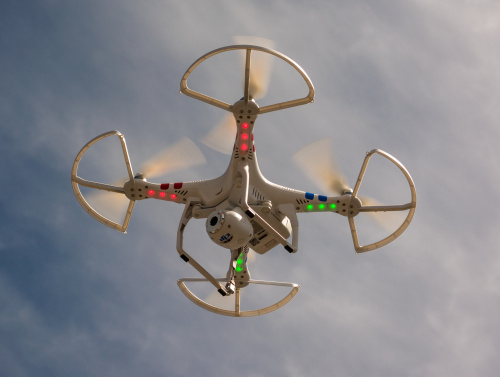
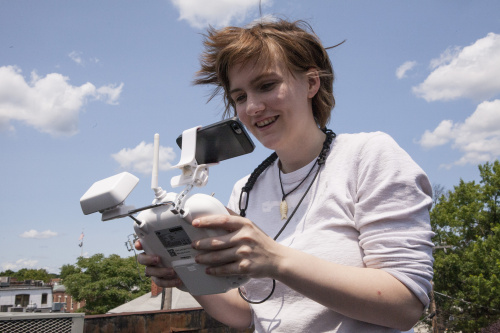
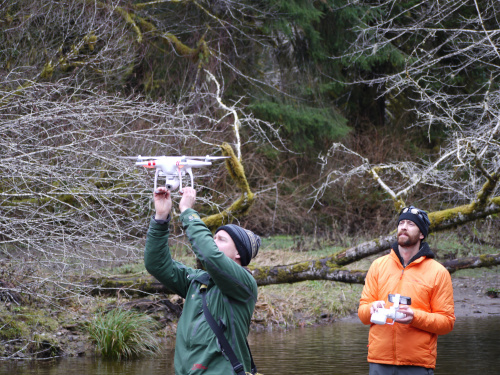
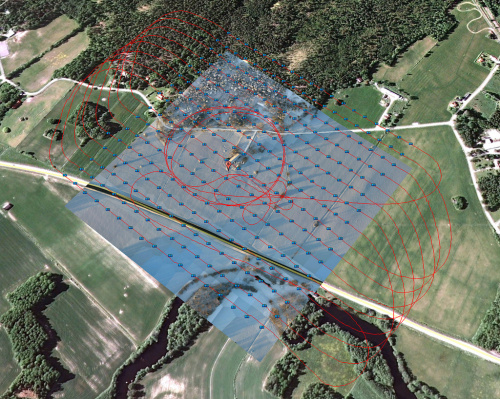
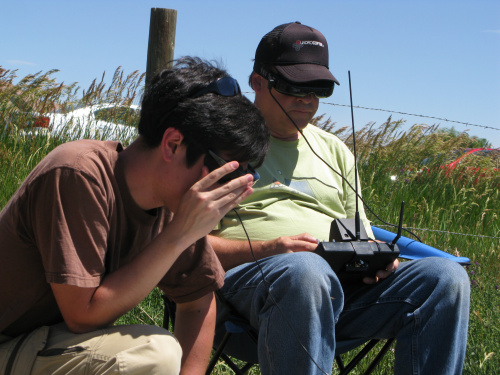







This is the best succinct description of the state of uav affairs I've yet seen. Thanks!
For those interested, here is the FAA's Advisory Circular, AC 91-57. It outlined their suggested guidelines for hobbyists flying UAVs. It was written in 1981, when they had no idea of the explosion of hobbyist UAVs to come.
I also followed the FAA v Pirker case with great interest, including reading all of the legal briefs. Very interesting, especially in regards to their assumed power to declare illegal the use of UAVs for profit. Part of the problem leading up to that case was that the FAA did not accept comments, but just started writing regulations, and then telling people that it was law. Probably one of the main reasons the case was ruled in Pirker's favor.
The other interesting point is that in the last five years, in instances where there have been injuries of even (one) death, the FAA has not investigated. (April 2010 in Tampa, FL; August 2010 in Brighton, CO; [September 2013 in Brooklyn, NY](http://www.nytimes.com/2013/09/06/nyregion/remotecontrolled- copter-fatally-strikes-pilot-at-park.html).) They have actively avoided any contact with these cases.
And finally, television, movie, and even commercial crews have been using UAVs to capture footage for years. I'm sure that the FAA has not been sending cease-and-desist orders to The Discovery Channel, Animal Planet, Spotlight Films, and the like.
Thank you for this great article, and for telling others where they can lodge comments and suggestions before the 23rd. I'm very interested to see how this plays out.
The regs need to be a bit less draconian. Flights below 50-100' over the owner's property (or a client's property) should be unregulated. The only reason to stick a commercial sticker on such uses is to require a license with the associated fees for revenue generation. Taking aerial photos with a drone might become illegal for commercial uses, yet would still be legal with a tethered balloon. Stupid!
OTOH flights over private property should be illegal without the owners consent. Someone who spots a drone over his back yard while his wife was sunbathing nude should have every right to shoot the damn thing down and charge the operator as a peeping tom!
I can easily fly a drone over my property and still checkout both the pools in neighbouring houses. If I had a drone !
Well with a long lens you might not even need the drone! When I was flying as a private pilot I often took my Nikon with me and did aerial photography. I once buzzed a nudist colony, but at the 500' minimal legal altitude you can't see much even with a 200mm telephoto.
good, evenhanded post, Mike,
The ease of use is what is killing it. Just like laser pointers, as mentioned by another poster. Time was, that you had to actually know something to use a laser. High voltage power supply, etc. Now any boob can buy a pointer and lase airplanes.
Time was that you needed to have some skill to operate a RC plane. it required persistence, and money, and skill. Now any idiot can buy a quad, and with very little skill at all, and almost zero experience, fly one and do all manner of dumb stuff.
and computers…..oooops, rant alert, rant alert breep breep
I second the comment about the quality of this post, very well done and informative.
As a former Airline Pilot, current Recreational Pilot and UAV enthusiast I see both sides to this issue. I do agree the current trend seems much too restrictive and will stifle innovation and growth. I hope there will be a set of regulations that are fair and allow reasonable use while protecting the safety and privacy of the general public. Unfortunately, I am doubtful the final FARs will fit this scope.
As others have said, please make your opinion known to the FAA.
This is why we can't have nice things. It doesn't matter how many responsible drone operators there are because there will always be too many idiots (and maybe even a few terrorists) for the FAA to let drones proliferate uncontrolled. The hobby drone market may have to go the way that laser pointers went, so it'll be illegal to buy/sell/possess any drone that's large enough to hurt an airplane.
I sorta reached the position where I decided the FAA could sod off when they started telling people they couldn't use drones for search and rescue. I can understand there are times where they might be a hazard and privacy concerns but there have been RC planes and helicopters for decades now and they haven't been an issue. They have had cameras on them for years but it is only when people toss the drone tag on them that they become some blasphemous thing that needs to be legislated into a cube.
I hope this was entered as a comment on the regulations.gov site... Very nice writeup and I've done my part submitting my own right at the beginning of the comment period just as everyone should have or should do immediately. Everything ends up in some sort of useless regulation cause of small numbers of dumb people. Really no different than the gun rights issue, or many other things that get overly regulated infringing on people's freedoms for the law abiding that have done it safely for a long time due to the actions of the stupid few or the uneducated scaremongers. I've learned a ton with FPV and multirotors and automated planes and hope to continue to do so. FAA should stay out of it and leave it up to the AMA
I'm consider myself a maker yet I'm all for stronger restrictions.
I live in Hawaii and am all too familiar with the pervasive noise and invasion of privacy the tour helicopter cowboys inflict on us every day. I also had the same thing when I lived in Seattle (where the peeping drone was discovered and another crashed into the Space Needle) with "newchoppers", the Coast Guard and air ambulances all day and night. Anyone who lives in LA probably has stories as well. There is already too much in the sky. Add to that drones and now you've really got a mess.
A certain scene from Monty Python and the Holy Grail comes to mind.
What if the government mandated a limit in altitude that drones could go by using sensors (barometers and GPS) to avoid them going to high (into the path of planes) or near air fields to keep them from being ingested by jet engines?
For brevity's sake I didn't go into the FAA's complete list of recommendations for model aircraft, but most of them are quite reasonable. One of them is don't fly within 5 miles of an airport without letting the tower know you're there. There is also a maximum altitude limit; there is disagreement on the preferred number but from a NAS standpoint the "class G" airspace nearest the ground (generally under 1200 feet) is uncontrolled, and one should stay in that zone unless you contact air traffic control to let them know you're in controlled airspace. (Balloon experimenters do this regularly.)
And you're right, one solution could be to mandate firmware limits. It's somewhat complicated in that if you define your maximum altitude as "above ground level", you'd potentially need to include ground levels for everywhere in the world? You also have to think about all the people building and programming these things themselves. Hopefully it won't come to this and any rulings will be based on personal responsibility rather than mandating crippled hardware.
I guess the government just needs to say "if they're smart enough to build it, they're smart enough to fly it".
Very interesting. I think the FAA is charged with safety. I hope they are extensive about it. I have several friends that are pilots and, more close to me are my children who play while planes fly over their (and all of our) heads. I would love for them to take up flying and either manned or unmanned craft...in a safe environment. We are intelligent enough to get these things in the air, let's find the best and most beneficial way of using them.